- Home
- slideshows
- miscellaneous
- We drove a $57,500 Tesla Model 3 and a $43,000 Chevy Bolt to see which is better - here's the verdict
We drove a $57,500 Tesla Model 3 and a $43,000 Chevy Bolt to see which is better - here's the verdict
Let's start with the Chevy Bolt, in "Summit White."

The production version of the Bolt made a stunning debut in 2016.

OK, so it's not the coolest looking car on the planet.
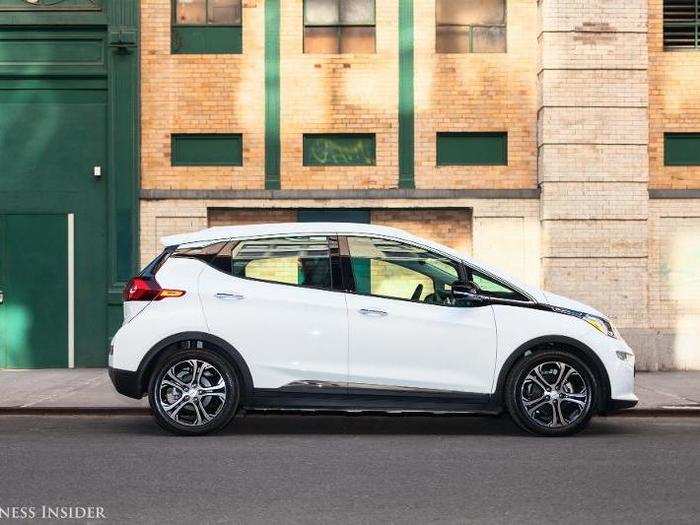
But it's far from a design disaster. The vehicle was developed by GM's South Korea arm and is clearly aimed at buyers who appreciate a functional, versatile vehicle that also just happens to be all-electric.
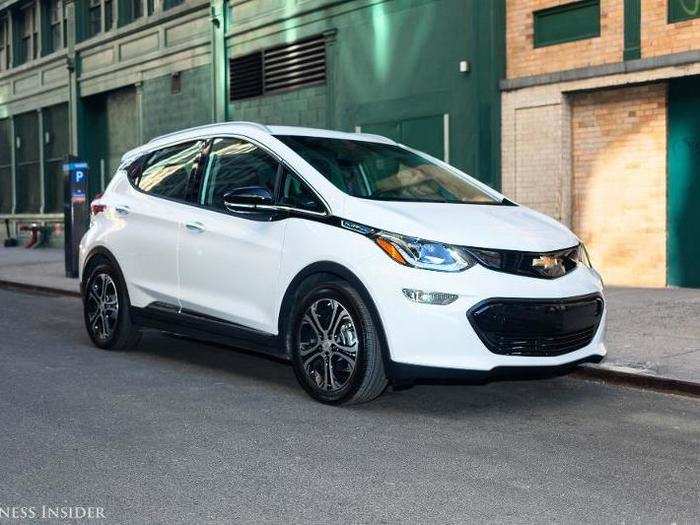
Because it was engineered around its large, 60 kWh LG battery pack — which provides actual structural integrity to the car — the Bolt is distinctive within GM's global lineup. That said, it does have that compact-crossover-hatchback look.
That classic hatchback rear end.
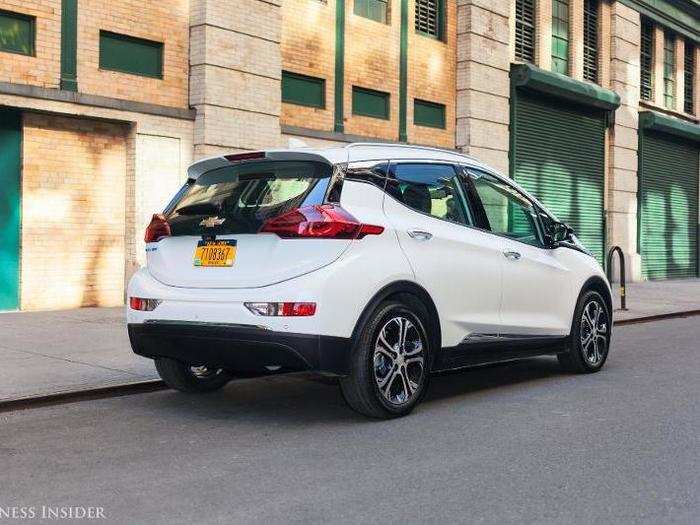
To be honest, while the Bolt has adequate cargo capacity, the lack of a front trunk or "frunk" where a gas motor might be means that it isn't a remarkable hauler of stuff.
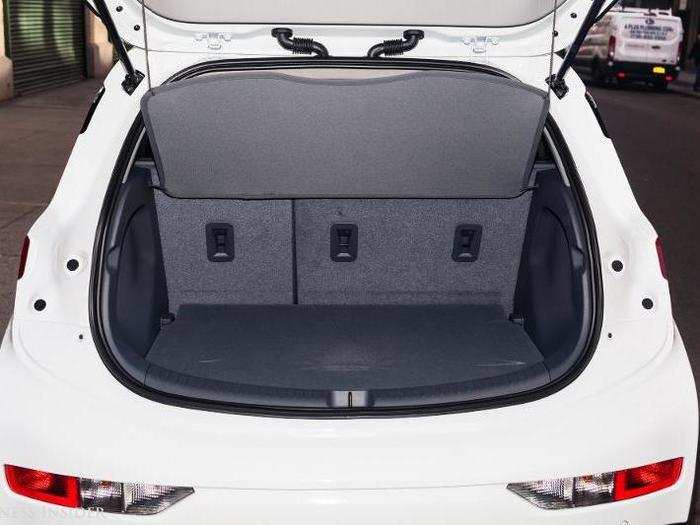
GM has said that the next iteration of the Bolt family could be a compact crossover with more people- and cargo-capacity.
The Bolt offers several charging options.
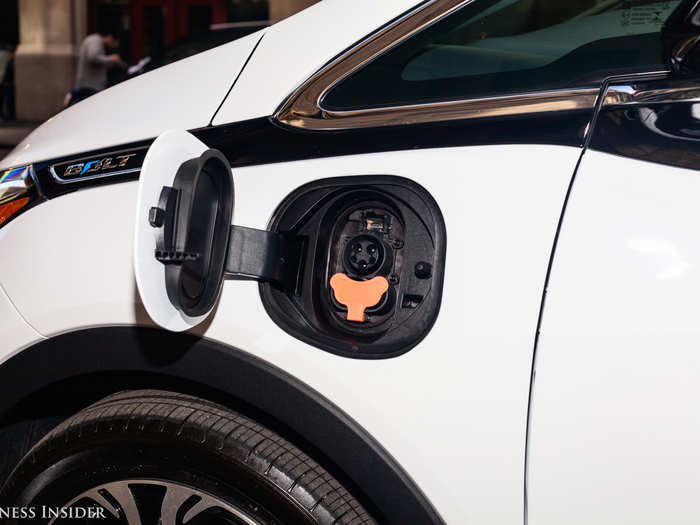
An included cable will enable you to plug into "Level 1" charging, which is a wall outlet. GM tells me it could take more than 24 hours to fully recharge the battery this way, but it would be useful for topping off the charge.
The Bolt will always default to 120 amperages when charging in this mode, but if you plug into 220-volt appliance power, you can override the default and charge a bit faster.
Beyond Level 1 at 120/220 volts, you have Level 2 and Level 3. Level 2 is widely served up by third-party providers such as ChargePoint. You sign up for the service and link a payment method. GM will also assist you in installing a 240-volt/32-amp charging station at your home, through a partnership with Aerovironment.
Level 2 charging gets you about 25 miles of charge per hour, so you can get back to fully juiced overnight. This was the variety of charging that we used, plugging the Bolt into a Level 2 ChargePoint station near my house. This worked well, but we had to leave the Bolt parked for long stretches, so many potential owners will want to explore the home setup.
Level 3 is DC fast charging, serving up about 90 miles of charge per 30 minutes of being plugged in. Tesla owners are familiar with this level because they can use the company's Supercharger network for longer journeys. Right now, widespread Level 3 charging is a missing link for the Bolt — and other long-range EVs. The expectation is that consumer demand will encourage more Level 3 stations to be brought online.
The Bolt uses GM's state-of-the-art and completely awful electronic toggle-y, joystick-y shifter. I'm accustomed to it from other GM vehicles, but I really hate it. (It is safe, however — you can't accidentally leave the car in neutral or shift to the wrong gear.)
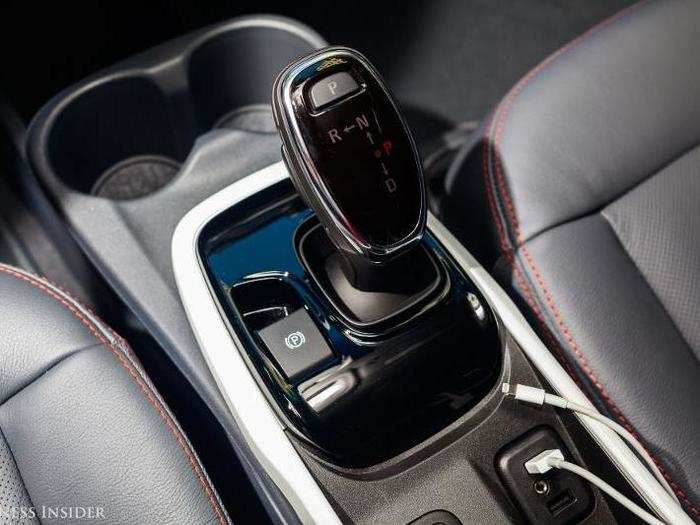
If you use the "L" option, one toggle below Drive, you're in one-pedal regeneration mode and can pour power back into the battery seemingly out of thin air.
The Bolt has one gear, can access all 266 pound-feet of its torque at exactly one RPM of motor speed, and when you step on the "gas" — well, it doesn't have the same pickup as a Tesla in Ludicrous mode. But it is plenty quick, with a 0-60mph time of less than seven seconds.
Our Bolt test car's interior was "Dark Galvanized Gray," two-tone. GM vehicles at this level used to have a parts-bin vibe to them, but the Bolt's interior felt more premium.
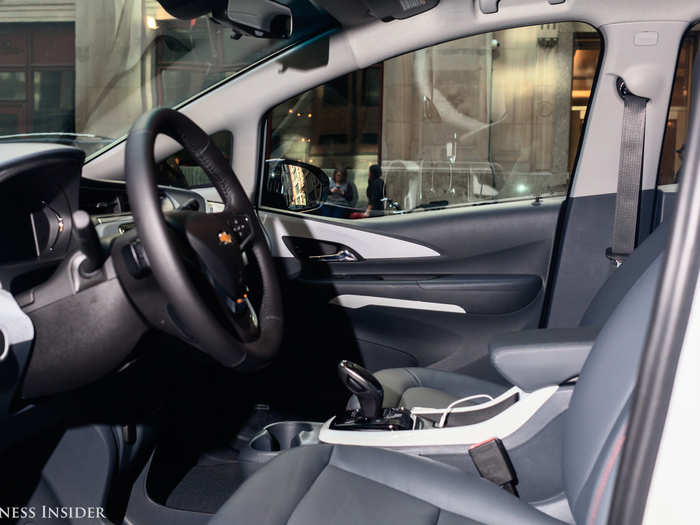
Behind the heated, leather-wrapped steering wheel, an all-digital instrument panel provides basic information, is customizable, and delivers the all-important range calculation on the left.
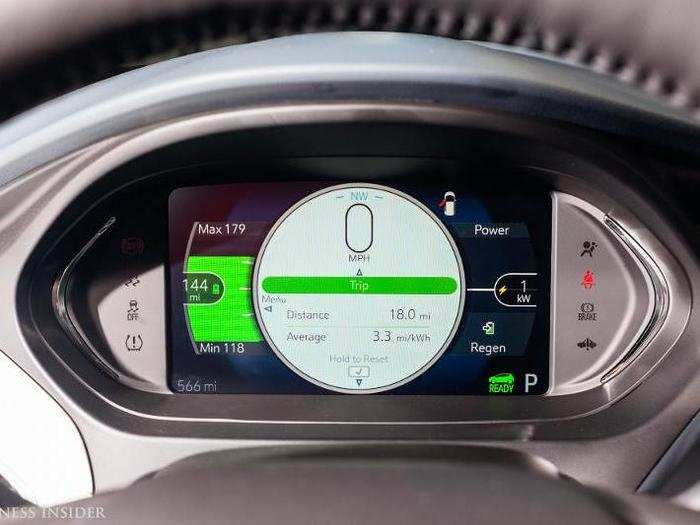
Range is determined by an algorithm that figures how much charge remains in the battery and then correlates it with your driving style and how much burden is being placed on the drivetrain. For example, because the Bolt uses regenerative braking, tooling around town gives you an estimated 128 MPGe, as braking helps to recharge the battery. But if you zooming along the highway, that drops to 110.
EVs are the opposite of gas-powered cars, which are more efficient as higher speeds. In the Bolt, you suck power at a faster rate on the freeway, and because you aren't braking, you get nothing back.
The Bolt's electronic brain calculates a range within the range: a minimum, a maximum, and what you can expect. If you put the car in Sport Mode, the range will decline. If you use one-pedal operation, relying on engine braking and a brake paddle behind the steering wheel except with you absolutely have to stop (it's easier than it sounds), you can see your range increase.
The MyLink infotainment setup runs on a central touchscreen.
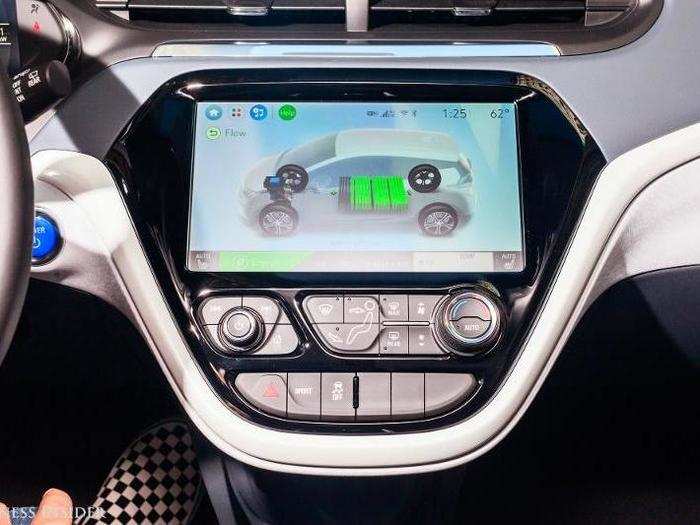
Apple CarPlay and Android Auto are available, and there is no native GPS navigation system! Instead, you use Apple CarPlay or Android Auto via a USB connection. You can also stay connected with the OnStar 4G LTE wifi so that you don't use up all of your wireless data.
Bluetooth pairing was a snap, and Apple CarPlay in the Bolt is a beautiful thing, liberating Siri and turning her into the best voice-recognition system in the car business. There are AUX/USB ports (you can get two for the back seat as an option) as well as 12V charging.
A six-speaker Bose audio system is an option and sounds pretty good, especially given how quiet the Bolt is.
GM has also outfitted the Bolt with a host of driver-assist-and-safety features, including a lane-keeping assist, a forward-collision alert, a blind-spot alert, and a cross-traffic alert. You're surrounded by airbags, and the Bolt's stability control makes for a secure ride. It gives up nothing on this front. And if anything does go wrong, you have OnStar to summon backup.
Building the Bolt has been relatively hitchless. It's assembled at GM's Orion factory in Michigan, and the carmaker recently announced that due to demand, it would be increasing production.
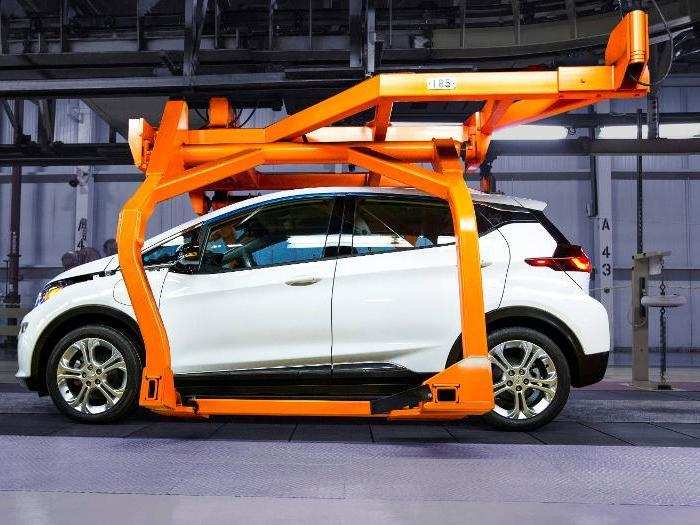
In many ways, the Bolt is GM's post-bankruptcy masterpiece, a real feather in the cap of CEO Mary Barra and her executive team, who took what the company had achieved with its ill-fated EV-1 back in the 1990s and turned it up to 11.
I also flat-out loved driving it. I blasted in and out of New York City twice, rocketed around the streets of Gotham, darting through traffic, and cruised along the highways of New Jersey. I also enjoyed just driving it around the quiet streets of the suburb where I live.
The steering is quick and responsive, and the handling is sharp enough to provide the confidence you need when surfing that sweet EV torque.
The single-pedal mode is also very cool — I dug not using the brakes at all for extended excursions in my town. After a bit of practice, you get into a kind of Zen state with it.
The Bolt it emits not one ounce of tailpipe greenhouse gas. Chevy says it will save you $4,250 on gas over five years, while costing $550 per year to keep charged. That comes out to approximately $45 per month in electricity, but if you aren't using the Bolt for daily commuting, you could spend less than that. In fact, that's where I think some real game-changing potential comes into play.
The vehicle has also been selling surprisingly well for GM, with over 20,000 units moves between its limited launch in 2016 and the end of 2017.
On to the Model 3! That's some fetching red right there!
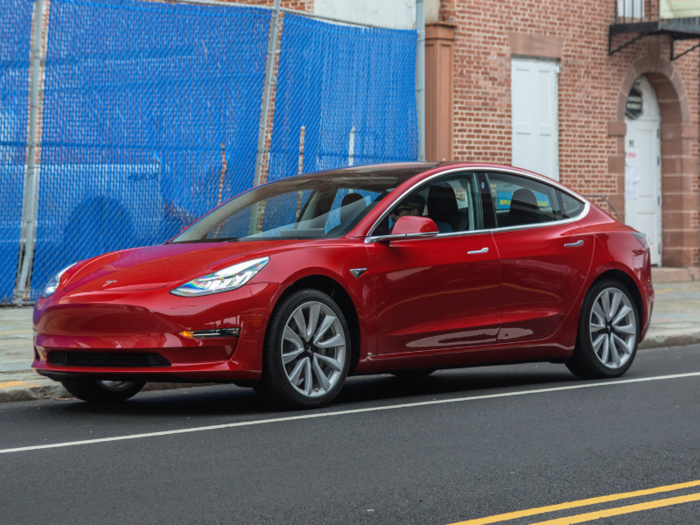
The Model 3 made its own stunning debut in 2016.
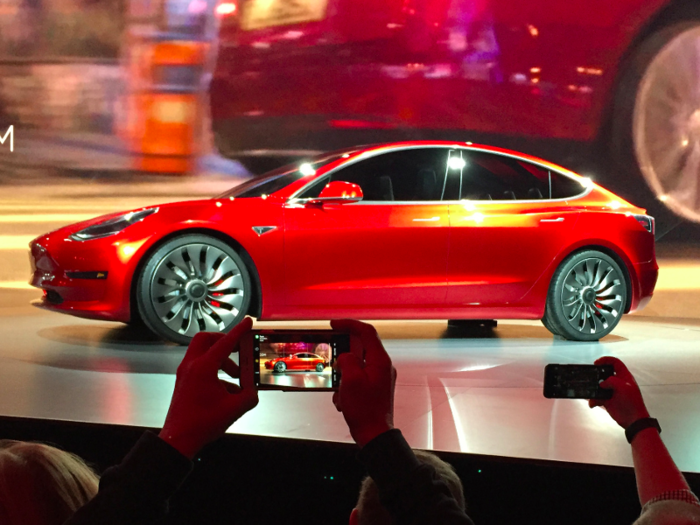
It's a sharp set of wheels.
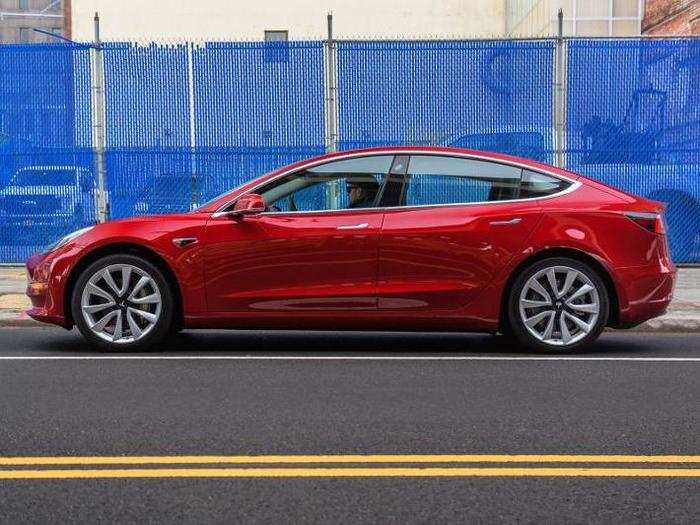
The Model 3 is sleek and shapely. It embodies and extends Tesla design chief Franz von Holzhausen's philosophy, which is elegant and conservative without being boring.
You could draw a line from the headlight to the tail light, along the Model 3's beltline, and it would be a clean yet expressive line that gives the car a core shape and provides a basis for the smoothly curved roof and the crisp kink of the rear window trim.
Obviously, it looks great in red. Tesla has always made design a core value. CEO Elon Musk believes that it doesn't cost anything extra to make products beautiful, and with the fastback four-door layout of the Model 3, he's right.
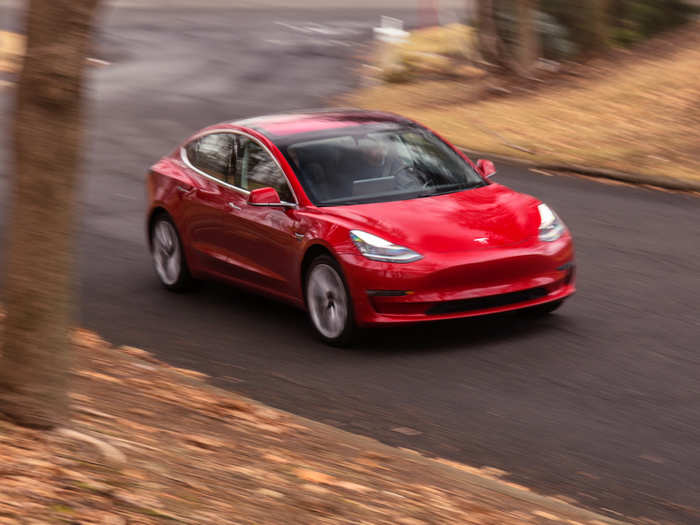
The proportions are pretty good — better than the Model S's, as that car now looks, well, big. They aren't perfect: the hood and front fenders, as well as the rear haunches, are stunted, so the middle of the Model 3 appears chunkier in profile than when looked at from a three-quarters perspective.
Also, I hate to say it, but viewed from the rear versus from the front, the Model 3 seems out-of-balance. The hood doesn't adequately counterbalance the hatch. Fastbacks are groovy, but they can make a car appear back-heavy. I'd almost rather have an old-school trunk lid back there.
In the final analysis, I think the Model 3 is the best-looking Tesla: sportier than the Model S, less spaceship-like than the Model X.
There isn't much debate about whose winning the battle of the back ends.
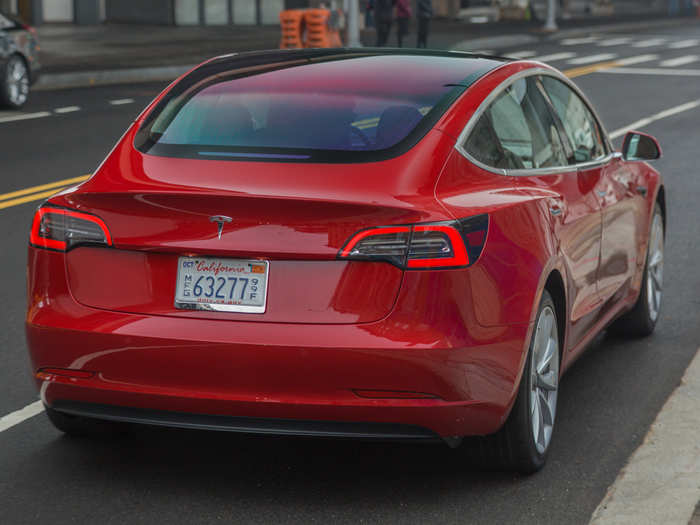
Nor is there any doubt regarding who wins the speed battle.
The Model 3 isn't as fast off the line as the Model S or Model X — but it's plenty fast. The 0-60 mph sprint is accomplished in just over five seconds. That's speedy enough for anybody, and the quality of that speed is very Tesla, and very electric-car. EVs have 100% of their available torque at 1 rpm, and that's means potentially neck-snapping velocity.
A Model S P100D with Ludicrous Mode engaged can do 0-60 mph in under 2.3 seconds.
That's jarring acceleration. The Model 3 is calmer. But not too calm. You are rewarded when you punch it.
On the highway, the Model taps out once you're up around the legal speed limit. It has plenty of passing power, but compared with, say, a Model X P100D SUV, it can't rocket away from traffic like a spaceship spooling up its warp drive.
We found the Model 3's cargo capacity, even though it isn't a hatchback, to be commendable. The addition of a frunk up front means more space for a suitcase or duffle bag.

The Model 3 has no key! Instead, you use a Tesla smartphone app or this valet key card. This sounds awesome, but in practice it's slightly annoying.
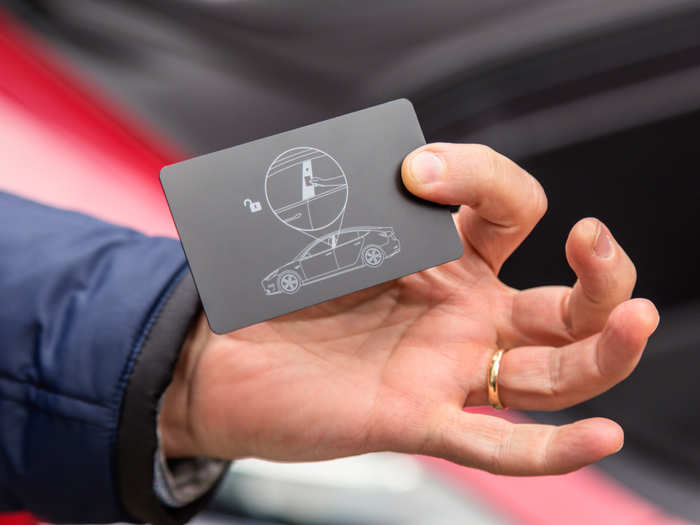
The card has to be precisely positioned near the Model 3's armrest. But it does provide backup if the app fails or you run out of smartphone juice.
The smartphone app worked perfectly well. It can unlock and start the Model 3 and provide an owner with information about the vehicle.
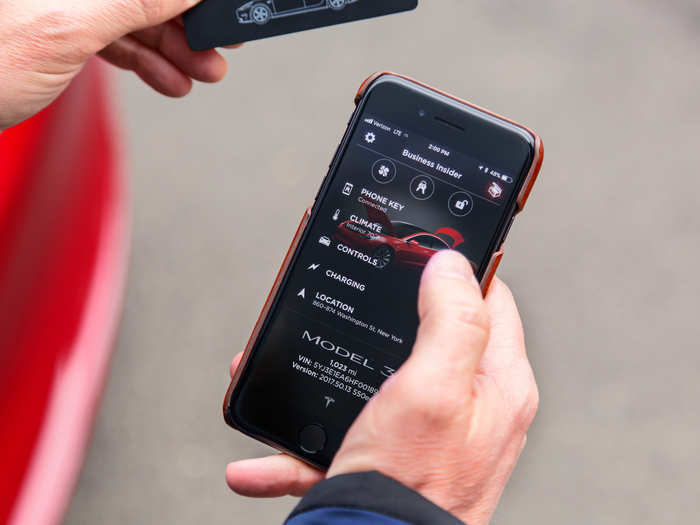
The Model 3's minimalist, Scandinavian-techno interior has garnered much commentary. I thought it was lovely and will likely be very influential on future interior vehicle design.
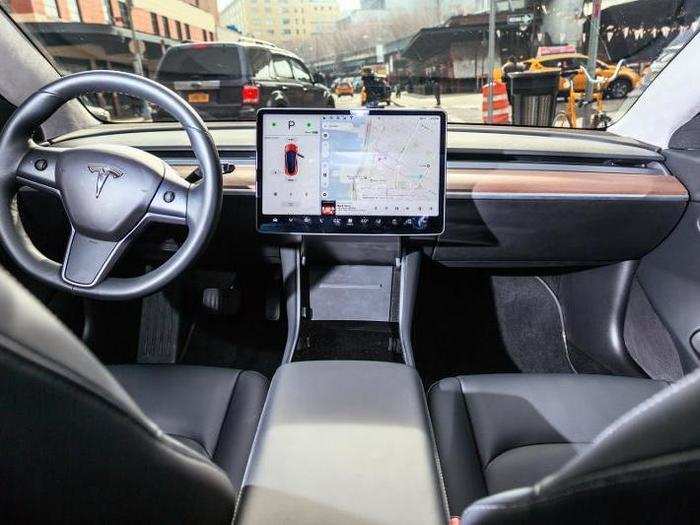
The signature features are a strip of open-grain wood trim and that large, horizontal touchscreen. There's just one button in the whole vehicle, for the hazard flashers. On the steering wheel, only two small trackballs that can be assigned various functions.
There are no visible air vents. Our test car's back synthetic leather upholstery was broken up only by some modest stitching here and there and some brushed metallic trim. The windshield sweeps up as a near-continuous pane of glass, across the roof and down to the rear hatch.
The glass roof is absolutely stunning.

Now about that touchscreen.
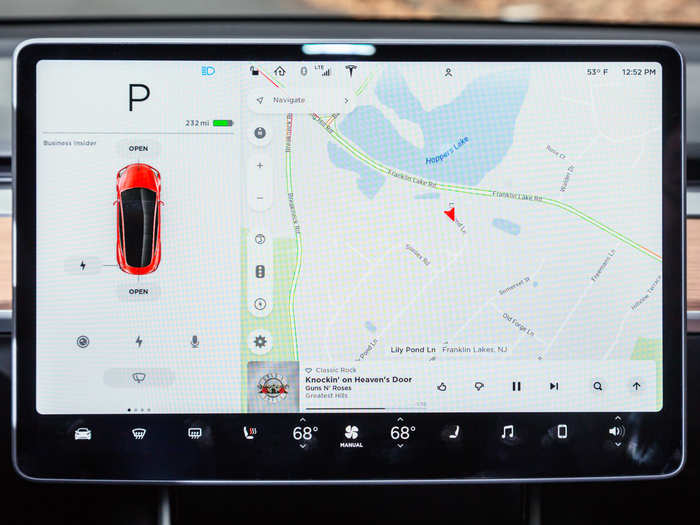
It's a totally Tesla infotainment experience.
There are some drawbacks, as well as multiple learning curves to confront. Tesla definitely wants Model 3 customers to think different about their car. I'm used to the big touchscreen on the Model S and X. But new Tesla owners will have to spend some time getting up to speed navigating among the various menus.
The GPS navigation worked the way it was supposed to, the touchscreen didn't lag or freeze up, and Bluetooth pairing was easy. There are enough USB ports to keep several devices charged, front and rear.
Tesla's in-house developed audio system also sounds very good.
You'd think that having the speedometer and other instruments on the left-hand side of the touchscreen would made matters difficult, but I got used to it quickly.
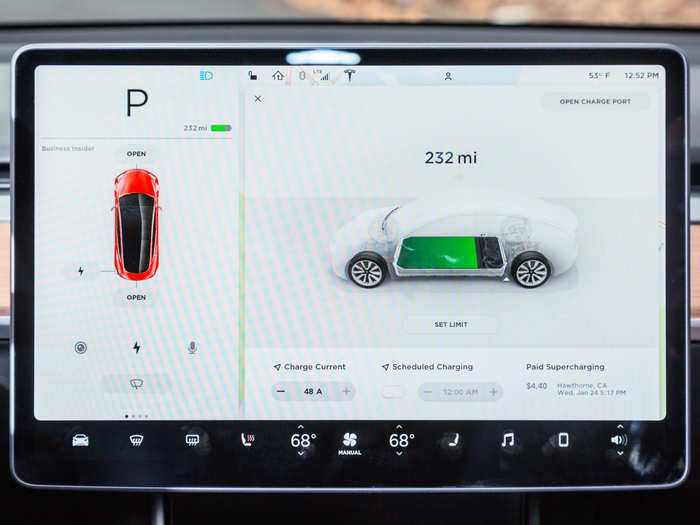
What about charging?
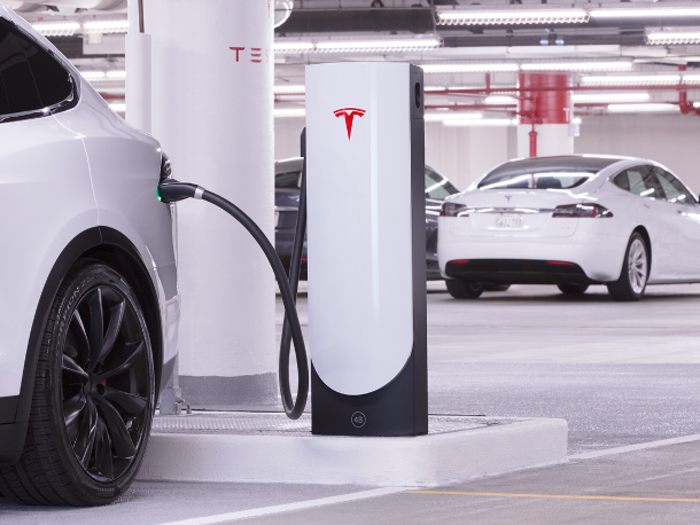
We managed to chop about 100 miles off a full charge in three hours of driving, but we weren't holding back.
So for many Tesla fans and EV enthusiasts, the Model 3 has the range to be a perfect daily driver, especially if the owner can plug into 220-volt level 2 charging at home overnight (Model 3 has access to Tesla Supercharger network, but unlike the Model S and Model X owners, fast-charging for Model 3 owners and leasers isn't free).
No way around it: Tesla makes charging easier. Chevy doesn't have anything to match the Supercharger network.
The Model 3's rollout has been anything but hitchless. Assembled at Tesla Fremont, CA factory, the Model 3 has been behind schedule since last fall and won't catch up to full-production targets until the middle of 2018.
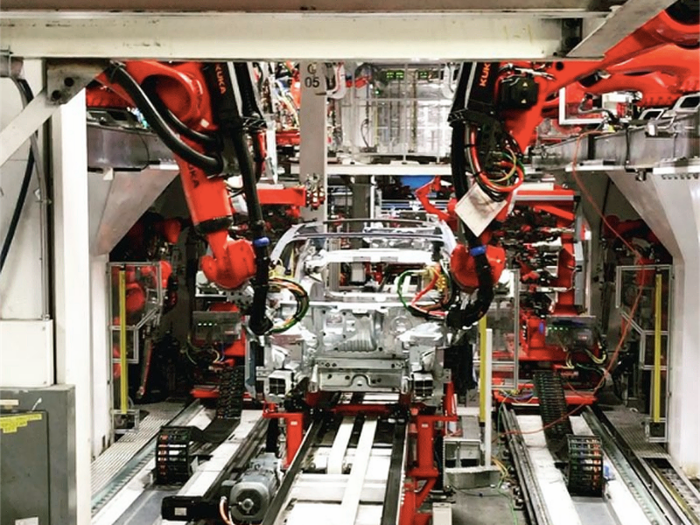
Tesla has sold about 10,000 Model 3's since it the car was launched last year.
While that level of sales might make it look as if the Bolt is beating the pants off the Model 3, don't forget that the Model 3 has something like 400,000 pre-orders. So the major challenge for Tesla now is ramping up production to meet that demand.
So you're going to want to clobber me for this, but as groovy as the Model 3 is ...
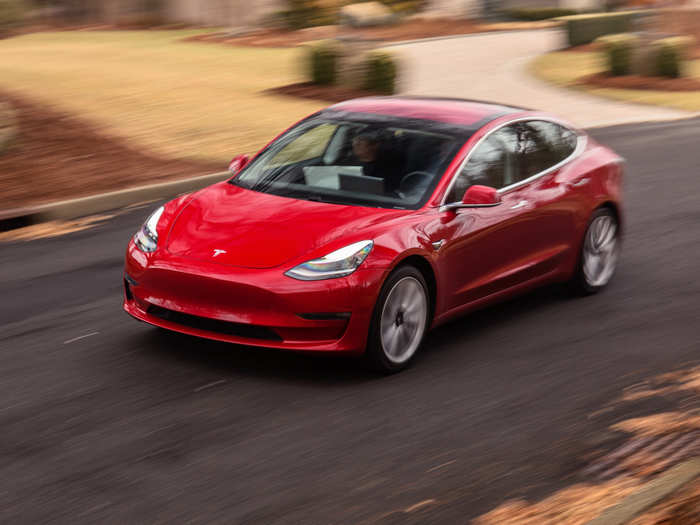
... the Bolt holds its own. So the verdict is that it's a tie!
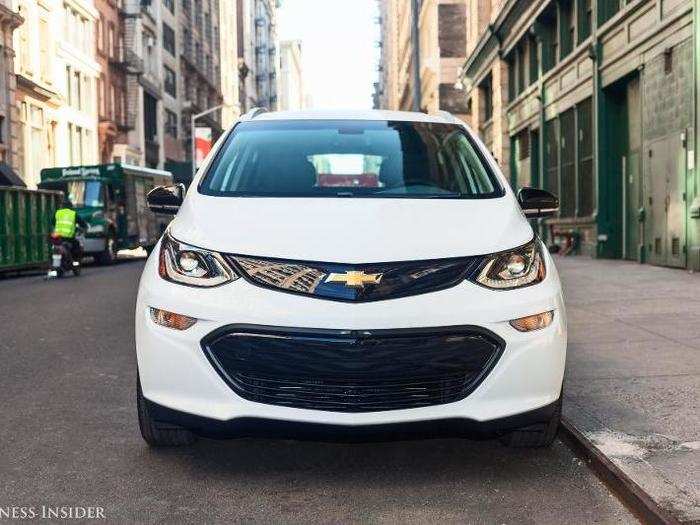
While the Model 3 has buzz and flash and sizzle and full weight of Tesla CEO Elon Musk's charisma behind it — not to mention something like 400,000 pre-orders — the Bolt is a car that you could head down to your local Chevy dealership and drive home the same day.
Still, the Bolt has numerous disadvantages relative to the Model 3. But the Tesla has it's own problems relative to the Chevy. In the end, they really aren't even in the same segment. The Model 3 is more of a luxury compact-to-midsize sedan, while the Bolt is a utilitarian compact hatchback. However, the Bolt punches well above its weight, while the Model 3 should really be better for how much its costs at the upper end of its specifications.
Pricing is also an issue. You can currently have any Model 3 you pre-ordered after a long wait and as long as it starts at $42,000. The $35,000 base vehicle isn't currently being manufactured. But if you want the $37,500 base Bolt, Chevy will gladly sell it to you. So if you want to get technical, the only true mass-market all-electric vehicle in the market is the Bolt.
Both cars are fun to drive, in their own ways. The Model S is stable and sporty and fast off the line, but the Bolt is hardly a slug and actually affords a kind of videogame like driving experience, especially when zipping around a big city such as New York.
As for self-driving, Tesla's Autopilot is an impressive advanced cruise-control feature (just don't ever take your hand off the wheel), but the Bolt is being used by General Motors as a platform for its Cruise fully self-driving technology and some of that might trickle down into consumer versions of the vehicle (Cruise is currently using Bolts only in a fleet capacity).
And not for nothing, the Bolt hit the market a year ahead of the Model 3, demonstrating that big, slow GM could to a certain extent beat Tesla at its own game and in fact deliver a less expensive, long-range EV, at least initially.
With not a lot of all-electric long-range vehicles in the market, if you're shopping today, you're basically looking at these two vehicles. And while the Model 3 is in many ways an objectively more impressive machine and carries with it that special Tesla something, the Chevy Bolt is far easier to obtain and even without dealer discounts, is clearly the winner on price.
So I have to call it a dead heat. But remember: Check back later this year when we get a chance to really out the Model 3 through its paces.
Popular Right Now
Popular Keywords
Advertisement